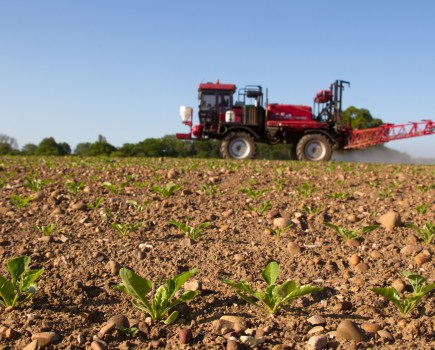After high autumn slug pressure and a mild, wet winter, growers are encouraged to assess and manage risk of damage to spring cereals.
Keith Walters, professor of invertebrate biology and pest management at Harper Adams University, says slug populations were significant last autumn after favourable breeding conditions in September and October.
The work he’s currently undertaking as part of a research project suggests that in many fields of suitable soil types, slugs remained active through until January, when monitoring stopped, and there’s a risk this activity has continued into the spring.
Whereas spring cereals are usually considered less vulnerable to slug damage than autumn sown crops due to lower slug populations, following the absence of any hard, prolonged frost and presence of favourable soil conditions, Keith warns that nothing should be taken for granted this year.
“Don’t take any risks. Look very carefully at fields destined for spring cereals, monitor for slugs and be ready to act if populations have survived the winter,” he says.
Heightened threat
Richard Cromie, independent agronomist with Crop Management Partners across the south of England agrees there’s a clear risk this spring.
He says this will be heightened on farms direct drilling into trashy stubbles, or where a cover crop has preceded the spring crop and not been grazed off by livestock.
In such situations, he recommends shallow cultivation to incorporate organic matter and knock slug numbers. A recent BASIS project trial conducted by the partnership’s trainee suggests this tactic can reduce damage in the following crop by about one-third.
“A stubble rake is better than nothing, but a 2-4in (5-10cm) cultivation is best. It’ll help to culturally beat some slugs up, relieve pressure on the following crop and reduce reliance on slug pellets,” adds Richard.
With much land still at field capacity it could be a couple of weeks before spring cereal drillings begin in earnest, so there’s time to identify risky fields and monitor slug populations, he says.
Less-than-ideal seedbeds
However, on larger farms some crops will have to be drilled earlier into less-than-ideal seedbeds increasing opportunity for seed hollowing or seedling damage.
Richard says growers should be prepared to act, targeting ferric phosphate slug pellets at problem fields or areas rather than taking a blanket approach.
“The wet autumn underlined the importance of a high quality, standard sized pellet like Sluxx HP, and should be considered if catchy conditions continue throughout the spring drilling campaign.
“That’s my preferred product in wet conditions. The larger, well formulated pellets offer a longer period of protection if you have rain soon after application,” he concludes.




